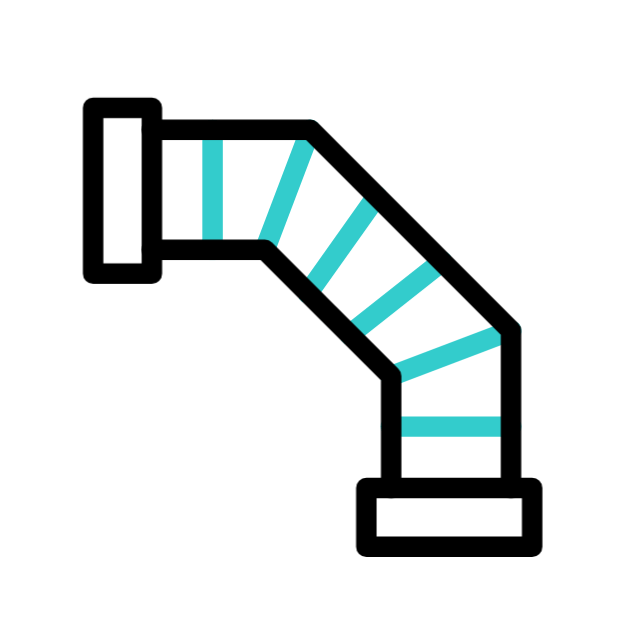Copper fact sheet
Key Facts A1-3 Primary copper
CO₂ emissions: 2.21 kg/kg
CO₂ emissions copper sheet 3 mm: 59 kg/m²
CO₂ emissions copper pipe 1/2: 0.66 kg/m²
Specific weight: 8900 kg/m³
Fire protection class: A1 according to EN 13501-1; DIN 4102
-
as a building material for pipes, in the roof area, for heat exchange and for cladding of all kinds
Standard material for power cables Very good electrical conductivity
Copper forms two protective layers on contact with air: Oxide layer and later the green coating, which consists of copper salts
Base material for alloys e.g. brass from copper & zinc; bronze from copper, tin & lead
-
Copper in Switzerland:
no economically usable primary sources, but 720 000 t secondary copper 90 kg/capita
End-of-life recycling rate is 50%
Only 900 tons of refined copper imported in 2021
Chile produces 1⁄4 of the world's primary copper
-
approx. 50 % of the copper comes from secondary sources
Ore has approx. 10 g copper per kg, e-waste approx. 50 g/kg
Electrolytic refining enables recycling without loss of quality favored by chem. Property of low affinity to atmospheric oxygen
Primary copper is mined both in opencast and underground mines comes from sulphide and oxide ores, which have an average copper content of 0.6 %
pyrometallurgical process route:
Raw ore is crushed and flotated to copper concentrate, which is melted and converted to 60 %-Cu copper stone "matte"
liquid copper stone is refined in a converter process to "blister copper" - 98 %, which is then cast in intermediate anodes and further refined by electrolytic refining to 99.99 % copper cathodes
-
Data set represents primary copper
Bare copper sheet per kg: 2.21 kg CO₂
Bare copper sheet per m³: 19667 kg CO₂
Copper sheet blank 3 mm thickness per m²: 59 kg CO₂
-
Data set represents copper tube from secondary sources, simplified per kg:
95% of large appliances such as boilers, air conditioning and ventilation systems or elevators are recycled
A recycling rate of 90% was assumed for pipes or cables that are often flush-mounted
5-10% metals and plastics, e.g. cable remnants or pipe sections in construction waste, are not recycled (disposed of in inert material landfill)
Module C2 represents the emissions from transportation to the treatment plant (50 km truck)
Module C4 Loads for disposal of non-recycled content
Module D contains charges for reprocessing and credits for the substitution of primary material
CO₂ emissions module C2: 0.008 kg
CO₂ emissions module C4: 0.0015 kg
CO₂- Capturing module D: - 1.053 kg
-
100 % recyclable - native metal
Durability - hardly any fatigue/self-protection
soft/stretchable, but resistant
Aesthetic patina - predictable properties
antibacterial - hygienic
excellent electrical/thermal conductivity low internal resistance, more conductive than gold
-
Very energy-intensive/expensive to manufacture
high dissolved concentrations harmful to humans and the environment naturally occurring in low concentrations in water bodies
-
CO₂ calculation according to ÖKOBAUDAT current version 2021-II from 25.06.2021 according to EN15804+A2
CO₂ calculation according to KBOB 2022, life cycle assessment data in the construction sector according to ISO 14067 & EN 15804
Kassler, K.(2012): 'Kupfer als Baustoff für Wasserleitungen ́ Salzwasser Verlag
Grunau, E.(2013): 'Lebenserwartung von Baustoffen- Funktionsdauer von Baustoffen und Bauteilen Wirtschaftlichkeit durch langlebige Baustoffe ́ Viehweg & Teubner Verlag
DIN EN 1057; DIN 17671/EN12449; DIN 1786





